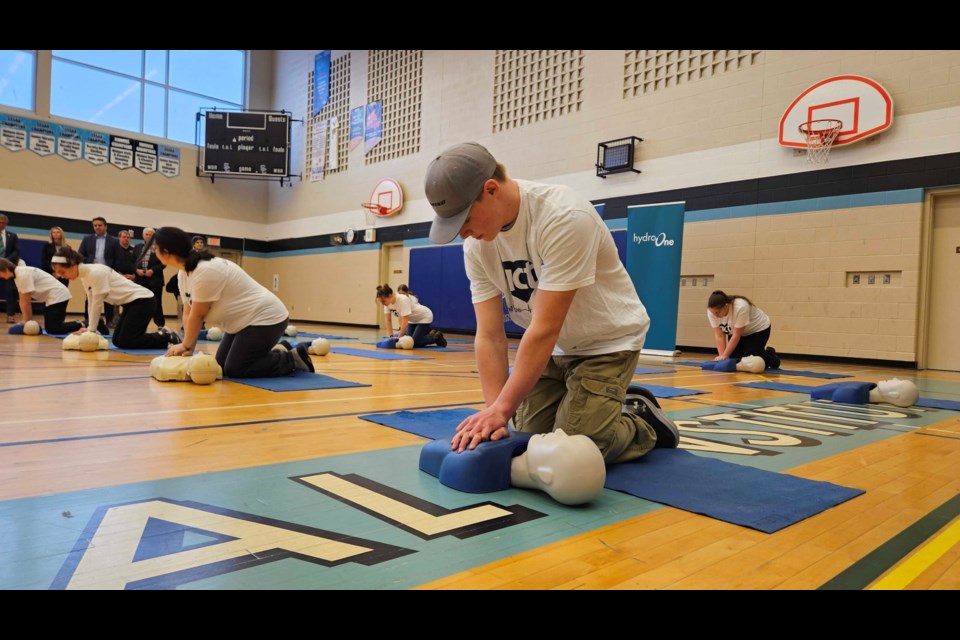THUNDER BAY — High school students across Thunder Bay will continue CPR training as well as learning how and when to use naloxone kits.
In a presentation today at Superior CVI, officials with the Advanced Coronary Treatment (ACT) Foundation with Hydro One said they will continue to support students to learn best practices for CPR as well as introduce the opioid overdose response training program across high schools in the city.
Jennifer Russell, the director of operations with ACT, said adding the naloxone training will definitely be beneficial for students.
"It's about expanding knowledge for students and adding to their capacity to help someone in a variety of different medical emergencies. And now, given the crisis we're seeing across the country over the past couple of years, it's just another tool they can use if they're ever faced with a medical emergency."
MPP Kevin Holland, who's also a former first responder, called the new programming invaluable.
"I'm so happy it's here - including the addition of naloxone considering the state of the opiate crisis in our region. Unfortunately, we're in a time now where overdose is pretty prevalent in all our communities, all around the world, so to bring that into this program and provide the training to our students as to how to administer naloxone is going to make a difference."
Sydney Ball is a Grade 10 student at Superior CVI who called the training helpful.
"It was really great to learn CPR because it gives me the confidence to help and be a first responder when it's needed. It really makes me feel comfortable knowing that if anything were to happen in the community or to my family, I can help out."
She also sees the importance of knowing about naloxone and how and when to use it.
"Now I could assist someone in our community who is having an overdose," she said.
With Hydro One's financial support along with the drug companies Amgen Canada and AstraZeneca Canada, the provincial government and the ACT Foundation will be able to provide this life-saving training to close to 80 per cent of high school students by 2025.
